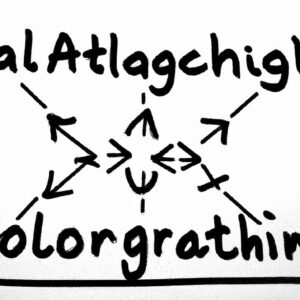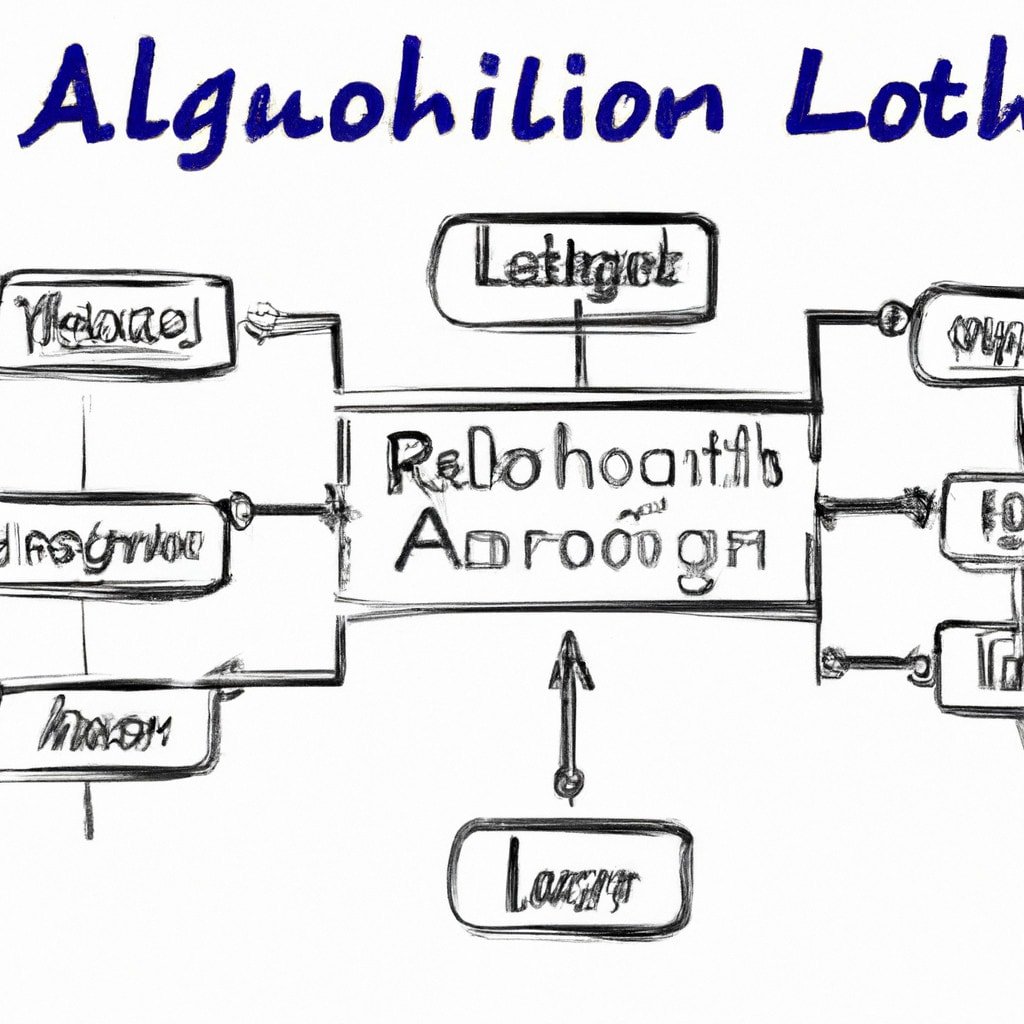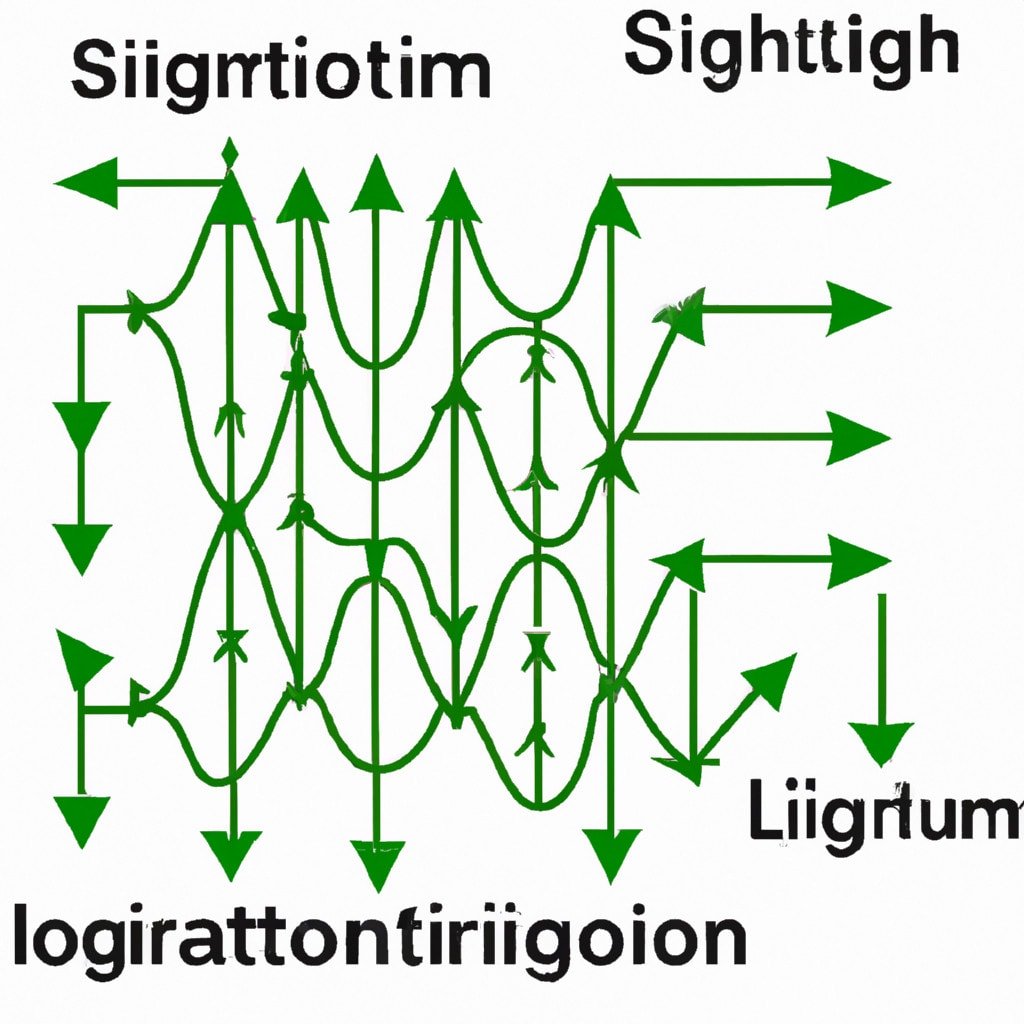Bienvenidos a mi blog, donde hoy hablaremos sobre cuál algoritmo de hashing es el mejor. Estudiar y comparar estas técnicas nos permitirá entender su importancia en la seguridad y eficiencia de nuestras aplicaciones. ¡Acompáñanos en este análisis!
Unveiling the Top Hashing Algorithms: Decoding the Quest for the Best
In the world of algorithms, hashing plays a significant role in ensuring data security and efficient data management. There are several hashing algorithms available, each with its advantages and disadvantages. This article will unveil the top hashing algorithms, helping you to determine which one may be the best for your specific needs.
1. MD5 (Message-Digest Algorithm 5): Developed by RSA Data Security, MD5 is a widely-used cryptographic hash function that generates a 128-bit hash value. Though it has been considered insecure due to vulnerabilities, MD5 remains popular for its simplicity and speed.
2. SHA-1 (Secure Hash Algorithm 1): Created by the National Security Agency (NSA), SHA-1 is another popular cryptographic hash function that generates a 160-bit hash value. However, it also suffers from security flaws and is not recommended for secure applications.
3. SHA-2 (Secure Hash Algorithm 2): As an improved version of SHA-1, SHA-2 is a more secure and powerful family of hashing algorithms. It includes different variants, such as SHA-224, SHA-256, SHA-384, SHA-512, SHA-512/224, and SHA-512/256, providing various levels of security and efficiency.
4. SHA-3 (Secure Hash Algorithm 3): Designed by the winner of the NIST competition, SHA-3 is the latest addition to the SHA family. It offers a high level of cryptographic security and comes in several flavors, like SHA-3-224, SHA-3-256, SHA-3-384, and SHA-3-512, providing flexibility for different use cases.
5. MurmurHash: Unlike the cryptographic hash functions mentioned above, MurmurHash is a non-cryptographic hashing algorithm designed for general-purpose applications. It is known for its fast processing speed and minimal collisions, making it ideal for tasks like indexing and searching.
6. CityHash: Developed by Google, CityHash is another non-cryptographic hash function that provides high-speed hashing for strings. Its performance, efficiency, and low rate of collisions make it suitable for large-scale data processing and indexing.
7. bcrypt: Focused on password hashing, bcrypt is an adaptive cryptographic hash function that incorporates a salt and a configurable number of iterations to prevent brute-force attacks and rainbow table attacks. Its adaptability makes it a popular choice for password storage and validation.
Each hashing algorithm has its strengths and weaknesses, depending on the specific requirements of your application. To determine which one suits your needs the best, consider factors such as security, speed, collision resistance, and ease of implementation.
This SECRET Will Make PEPE EXPLODE! PEPE $0.01
Hashing and Hash Cracking Explained Simply! (2021) | MD5, SHA1, and SHA256
Is SHA-512 superior to SHA-256?
In the context of algorithms, SHA-512 and SHA-256 are both cryptographic hash functions that belong to the SHA-2 family. These functions play a crucial role in ensuring data integrity and security. To determine whether SHA-512 is superior to SHA-256, it’s essential to consider their primary differences and how they affect their performance.
1. Hash Output Size: The most significant difference is the size of the hash output. SHA-256 generates a 256-bit (32-byte) hash, while SHA-512 produces a 512-bit (64-byte) hash. This implies that SHA-512 offers a larger number of possible output values, making it more resistant to the “birthday attack,” a type of cryptographic collision attack.
2. Security: Due to its longer hash output size, SHA-512 is considered more secure than SHA-256. It can better defend against brute-force attacks and resist attackers who attempt to alter the original data.
3. Speed: Depending on the platform, the speed of SHA-512 and SHA-256 can vary. On 64-bit platforms, SHA-512 tends to be faster due to its optimization for 64-bit operations. However, on 32-bit systems, SHA-256 usually performs better.
In summary, SHA-512 is superior to SHA-256 in terms of security and hash output size, making it a more robust choice for ensuring data integrity and protecting against attacks. However, the specific use case and platform should be taken into consideration when deciding which algorithm to use in a particular situation.
Which one is superior: MD5 or SHA-256?
In the context of algorithms, SHA-256 is superior to MD5.
The MD5 (Message-Digest algorithm 5) is a widely used cryptographic hash function that produces a 128-bit (16-byte) hash value. However, it suffers from various security issues, including vulnerability to collision attacks and birthday attacks. As a result, it is considered cryptographically broken and unsuitable for further use.
On the other hand, SHA-256 (Secure Hash Algorithm 256-bit) is part of the SHA-2 family and generates a 256-bit (32-byte) hash value. It offers a significantly higher level of security than MD5, as it is more resistant to collisions and pre-image attacks. SHA-256 is currently the preferred choice for password hashing and data integrity purposes in modern security applications.
In summary, due to its enhanced security features, SHA-256 is the superior choice compared to MD5 when considering algorithms for hashing functions.
Is bcrypt more secure than SHA-256?
In the context of algorithms, bcrypt is generally considered to be more secure than SHA-256 for storing passwords. Bcrypt is a password hashing algorithm specifically designed for password storage, whereas SHA-256 is a general-purpose cryptographic hash function.
There are a few reasons why bcrypt is more secure for password storage:
1. Adaptive work factor: Bcrypt allows you to set a work factor, which determines the number of iterations the algorithm will perform. This means that as computing power increases over time, you can increase the work factor, making it more difficult for an attacker to crack the password hashes.
2. Built-in salting: Bcrypt automatically generates and incorporates a salt (a random value added to the input) in the hashing process. This makes it more resistant to precomputed lookup tables (rainbow tables) or brute-force attacks using dictionaries of known passwords.
3. Resistance to GPU-based attacks: Compared to SHA-256, bcrypt is slower and more resource-intensive, which makes it less suitable for parallel processing on GPUs. This makes it harder for attackers to use powerful GPUs and specialized hardware to crack the hashed passwords at high speeds.
While SHA-256 may be used securely with proper salting and multiple iterations, this requires additional implementation effort. Bcrypt, on the other hand, provides a more secure and simple-to-use solution for password storage by handling these concerns automatically.
Which hashing algorithm has the quickest execution time?
It is difficult to single out one hashing algorithm as having the quickest execution time since it depends on the specific use case, data set, and hardware in question. However, some hashing algorithms are known for their speed and efficiency.
One such example is the MurmurHash algorithm, which is a non-cryptographic hash function that prioritizes execution time and good distribution of hash values. The MurmurHash family has multiple versions like MurmurHash3, which is optimized for both 32-bit and 128-bit outputs.
Another example of a fast hashing algorithm is the xxHash algorithm, designed to be extremely fast while providing excellent distribution of hash values. Depending on the implementation and hardware, this hash function can be even faster than MurmurHash.
Keep in mind that when choosing a hashing algorithm, it is essential to consider your requirements – whether you prioritize speed, security, or a balance between the two.
What is a more effective hashing algorithm than SHA-256?
A more effective hashing algorithm than SHA-256 is SHA-3 (Secure Hash Algorithm 3), also known as Keccak. SHA-3 is considered to be stronger and faster than SHA-256, providing better security and performance.
The SHA-3 algorithm was developed as a response to the vulnerabilities identified in its predecessors, such as collision attacks on earlier versions of the Secure Hash Algorithm family. In 2012, the National Institute of Standards and Technology (NIST) announced the selection of the Keccak algorithm as the winner of the NIST hash function competition.
Some advantages of SHA-3 over SHA-256 include:
1. Better resistance to collision attacks: SHA-3 has higher security margins against collision attacks and preimage attacks compared to SHA-256.
2. Flexible output size: SHA-3 allows for variable digest sizes, making it adaptable to different use cases and security requirements.
3. Performance: SHA-3 performs better on certain hardware platforms, particularly when parallel processing is available. This can lead to faster hashing times and improved efficiency.
4. Sponge construction: SHA-3 uses a sponge construction, which is fundamentally different from the Merkle-Damgård construction used in SHA-256. This provides increased resistance against various types of cryptographic attacks.
In summary, SHA-3 represents a more advanced and effective hashing algorithm compared to SHA-256, offering improved security and performance in a variety of applications.
What are the top three hashing algorithms for optimal performance and security?
The top three hashing algorithms for optimal performance and security are:
1. SHA-256 (Secure Hash Algorithm 256-bit): It is a part of the SHA-2 family, which was developed by the National Security Agency (NSA) in the United States. SHA-256 is widely used for its high performance and strong security features. It generates a fixed-size hash output of 256 bits, providing excellent resistance to collision attacks, preimage attacks, and other common vulnerabilities.
2. bcrypt: bcrypt is an adaptive password hashing algorithm specifically designed for secure password storage. It is slow by design, incorporating a work factor or cost factor that determines the computational effort needed to hash passwords. As a result, it effectively defends against brute-force attacks and dictionary attacks. The bcrypt algorithm also incorporates salting, further increasing security by adding unique random data to the hash to prevent rainbow table attacks.
3. Argon2: Argon2 is a relatively new hashing algorithm, winning the Password Hashing Competition in 2015. It is designed to be efficient, secure, and resistant to both side-channel attacks and memory-hard attacks. Argon2 has two versions: Argon2i, optimized for resistance to side-channel attacks, and Argon2d, optimized for resistance to time-memory trade-off attacks. Additionally, there is the hybrid version, Argon2id, which combines the best features of both.
How do the best hashing algorithms ensure data integrity and collision resistance?
The best hashing algorithms ensure data integrity and collision resistance through the use of cryptographic hashing functions, large output space, and complex mathematical operations.
A cryptographic hashing function is a one-way function that takes an input (or ‘message’) and returns a fixed-size string of bytes, which is typically a ‘digest’. The output is unique for each unique input, making it difficult to reverse-engineer the original data. This ensures data integrity as even a small change in the input data will generate a completely different hash.
To achieve collision resistance, a good hashing algorithm must have a large output space. This means there should be a vast number of possible hash values, making it highly unlikely that two different inputs will produce the same hash value. Ideally, the output space should be at least 2^256 or larger to maximize collision resistance.
Additionally, most modern hashing algorithms employ complex mathematical operations such as modular arithmetic, bitwise operations, and compression functions. These processes add extra security and help ensure a uniform distribution of hash values across the output space, further reducing the likelihood of collisions.
Popular algorithms like SHA-256 and SHA-3 are designed with these factors in mind, offering robust data integrity and collision resistance for various applications, including data verification, password storage, and digital signatures.
Why are certain hashing algorithms considered superior for specific applications and industries?
Certain hashing algorithms are considered superior for specific applications and industries due to a combination of factors, such as security, performance, collisions resistance, and compatibility with existing systems.
Security is a primary concern for many industries, especially those dealing with sensitive data or financial transactions. A more secure hashing algorithm typically has a larger hash output size, making it computationally harder to perform brute-force attacks or find hash collisions.
For instance, the SHA-256 algorithm is preferred over the older and weaker MD5 for applications requiring high security, such as in the finance and healthcare sectors.
Performance is vital when dealing with large amounts of data or high-speed processing requirements. Some hashing algorithms are faster than others, enabling quicker execution of tasks. For example, MurmurHash and CityHash are non-cryptographic hashing algorithms frequently used in big data processing because of their fast performance.
Collision resistance is another critical factor. A good hashing algorithm should produce distinct hashes for different inputs, minimizing the chance of two different inputs having the same hash value. Algorithms with low collision rates are more suitable for applications like databases or content addressable storage, where unique identifiers are crucial.
Lastly, compatibility with existing systems can drive the choice of hashing algorithms in some industries. Organizations may opt for a particular algorithm simply because their infrastructure already supports it or due to legal and regulatory requirements.
In conclusion, the superiority of a hashing algorithm depends on its ability to provide the necessary security, performance, collision resistance, and compatibility for a specific application or industry. Choosing the right algorithm can significantly impact the overall efficiency, reliability, and security of a system.




